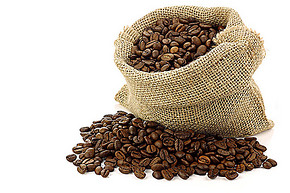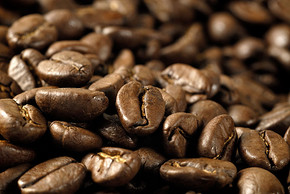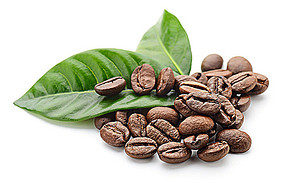Peruvian coffee history and origin introduction
Follow the caf é (Wechat official account vdailycom) and found that Beautiful Cafe opened a small shop of its own.
Coffee came to Peru between 1740 and 1760. At that time, the jurisdiction of the Peruvian Governor's District was larger than that of present-day Peru. Although the climate in the country is quite suitable for the large-scale cultivation of coffee, in the first 100 years, all the coffee was drunk locally. Coffee was exported to Germany and England after 1887.

In the 20th century, because of a loan owed to the British government, the Peruvian government finally had to repay 2 million hectares of land in central Peru, of which 1/4 was converted into plantations, crops including coffee. Many immigrants from high areas came to work here, and some of them finally got the land. Others bought land after the British left Peru.
Unfortunately, for the coffee industry, the bill introduced by Juan Velasco's government in the 1970s hindered its development. International coffee agreements have previously guaranteed the sale and price of coffee, so the government has no incentive to develop infrastructure. When the government withdrew its support for the industry, the coffee industry fell into chaos. The quality of coffee and Peru's market position were further weakened by the establishment of Shining path, as guerrillas destroyed farmland and drove farmers out of their homes.
The gaps left by the Peruvian coffee industry have been filled in recent years by non-governmental organizations such as Fair Trade; Peruvian coffee is now mostly publicly trade certified. More and more land is also used to grow coffee: there were 62000 hectares in 1980 and 95000 hectares today. Peru is now one of the largest producers in the world.
The infrastructure in Peru is still inadequate, so the production of high-quality coffee remains a challenge. There are only a few processing plants near the coffee garden, so most coffee usually has to be transported for a long time before it can be harvested and processed. As a result, some coffee is bought to be mixed with other coffee and resold on the way to the coast. Interestingly, about 1/4 of the country's 100000 small producers now join co-operatives; in addition, Fairtrade certification applies only to coffee from co-operatives. Peru also attaches great importance to organic farming, but this is not directly related to cup quality. In fact, the price of Peruvian organic coffee is usually quite low, so the purchase price paid to farmers is also lower, regardless of whether the quality is good or not.
Perhaps for this reason, and the popularity of Tibika varieties, leaf rust is beginning to become a headache for Peruvian producers. Although the yield in 2013 is good, it may reduce production in the near future because of the increasing severity of leaf rust.
Coffee taste
Peruvian coffee is mostly quite pure, but it is also mild and insipid. Taste sweet, mellow relatively high thickness, but lack of complexity. Nowadays, more and more coffee tastes unique and juicy.
Producing area
Population: 30475000
2013 production (60 kg / bag): 4200000 bags
Some coffees are grown outside the areas listed below, but their quantity and prestige are not as good as those in major areas. Some people believe that Peru has an excellent advantage in terms of rising temperatures and climate change, as many areas of the country have high elevations and may be quite suitable for coffee cultivation in the future.
Important Notice :
前街咖啡 FrontStreet Coffee has moved to new addredd:
FrontStreet Coffee Address: 315,Donghua East Road,GuangZhou
Tel:020 38364473
- Prev

Brief introduction of San Ignacio Coffee Bean in San Ignacio, Peru
Following Cafe Review (official Wechat account vdailycom) found that the Beautiful Cafe opened its own shop in San Ignacio San Ignacio, Peru. According to Gardelli, this is the best Peruvian he has ever tasted. Rony Gurrero founded Lima Coffee Coffee in Jaen in 2016. Ronnie was the largest coffee in Peru.
- Next

What is Peruvian raccoon shit coffee?
Following Cafe Review (Wechat official account vdailycom) found that Peruvian Coffee has opened its own small shop Peruvian Coffee has been very popular in the international market in recent years, frequently won the International Coffee Gold Award, Peruvian coffee is very popular for its mellow taste and soft sour taste. Now Peru has become the world's third largest exporter of coffee, especially a kind of coffee derived from raccoon feces.
Related
- Detailed explanation of Jadeite planting Land in Panamanian Jadeite Manor introduction to the grading system of Jadeite competitive bidding, Red bid, Green bid and Rose Summer
- Story of Coffee planting in Brenka region of Costa Rica Stonehenge Manor anaerobic heavy honey treatment of flavor mouth
- What's on the barrel of Blue Mountain Coffee beans?
- Can American coffee also pull flowers? How to use hot American style to pull out a good-looking pattern?
- Can you make a cold extract with coffee beans? What is the right proportion for cold-extracted coffee formula?
- Indonesian PWN Gold Mandrine Coffee Origin Features Flavor How to Chong? Mandolin coffee is American.
- A brief introduction to the flavor characteristics of Brazilian yellow bourbon coffee beans
- What is the effect of different water quality on the flavor of cold-extracted coffee? What kind of water is best for brewing coffee?
- Why do you think of Rose Summer whenever you mention Panamanian coffee?
- Introduction to the characteristics of authentic blue mountain coffee bean producing areas? What is the CIB Coffee Authority in Jamaica?

